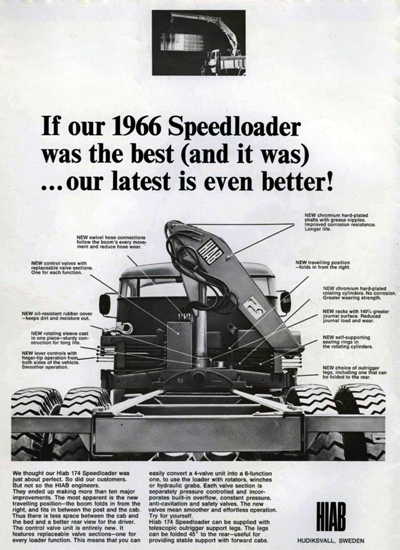Before the HIAB 174 Speedloader, Manual Loading Was the Norm

Can you imagine a time when loading and unloading was done only by hand? Before cranes, workers had to rely only on their strength and makeshift arrangements like planks to discharge loads. HIAB METHOD looked back at the good ‘ol days with Enstaberga Cementgjuteri, a pre-cast concrete works in Stockholm, started by brothers Georg and Sivert Karlsson in 1945.
Enstaberga truck driver Rune Eriksson spoke about the difficulty experienced in loading and unloading bigger pipes. The concrete pipes had to be rolled off by many workers. They were eased down using ropes tied to the front wall of the truck’s deck. Rolling them off one by one involved tipping the desk, but this had to be done carefully so that the pipes didn’t fall on top of each other and break.
This tiring loading and unloading work by hand became a thing of the past once the HIAB Model 193 wire-rope crane was purchased by the company. It brought down the workload and the requirement for many hands for the job. But with the free-slewing jib, the unloading task had to be done carefully as the load would swing to and fro, and more so when the truck was not standing perfectly level. The solution to this problem came in the form of the 173 Speedloader. When mounted on the truck, it could unload almost a ton at a time.
Even better is the new rotator-equipped 174 Speedloader, says Eriksson. The rotator keeps the load from twisting during the lift. Positioning the pipes exactly and laying up high pipes is also easier with the hydraulic extension. Rune Eriksson says that he can deliver thrice as many pipes a day as he could previous to the 174.
Take a look at the HIAB Method Magazine No. 8 from 1967.
